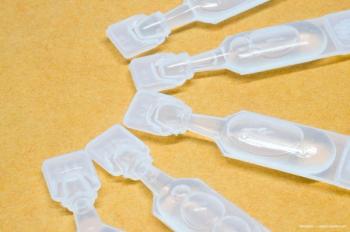
Intracortical Visual Prosthesis achieves 2 years of successful testing
The system is comprised of 25 miniaturized wireless stimulators with 400 electrodes that are implanted permanently.
The Intracortical Visual Prosthesis (ICVP), a wireless visual prosthesis brain implant, has achieved 2 years of successful testing after surgical implantation in a patient who is blind. The prosthesis bypasses the optic nerve and sends images directly to the patient's brain to create artificial sight, reported Phillip Troyk, PhD, who led the multi-institution team that developed the technology. He is the executive director of the Pritzker Institute of Biomedical Science and Engineering and professor of biomedical engineering, Illinois Institute of Technology, Chicago.
The system is comprised of 25 miniaturized wireless stimulators with 400 electrodes that are implanted permanently. The clinical testing of the prosthesis “provides study participants with an improved ability to navigate and perform basic, visually guided tasks,” according to a recent press release.
The ICVP works by focusing on creating artificial vision by bypassing damaged optical pathways to directly stimulate the visual cortex.
The patient implanted with the ICVP lost his vision because of a series of detached retinal surgeries and infection.
When using the ICVP, an external stimulator is strapped to the patient’s head to activate the implanted electrodes. He wears glasses with an attached camera that transmits his surroundings to his brain. The information viewed by the patient differs from normal vision, in that it is a series of electrical phosphenes that are produced by the stimulation of the neurons in the visual cortex. The phosphenes advise the patient that something is in his vicinity.
In commenting on the technologic progress, Troyk said, “The past 2 years have been nothing short of extraordinary. Witnessing the ICVP bring about a new form of visual perception to individuals with blindness has reinforced our commitment to this endeavor. Our focus remains steadfast on improving and understanding how this technology can further aid in navigation and performing daily visual tasks for those without biological vision.”
Research volunteers are being sought to participate in the project; they must have lost vision as adults who previously had normal or near-normal vision for at least the first 10 years. Following the implantation and about 1 month of recovery, participants will be followed for 1 to 3 years, depending on the date of implantation.
The Illinois Institute of Technology is collaborating on this project with Rush University Medical Center, The Chicago Lighthouse, both in Chicago; the Wilmer Eye Institute at Johns Hopkins, Baltimore; the University of Texas at Dallas; Microprobes for Life Science, Gaithersburg, MD; Sigenics Inc., Chicago; and the University of Chicago, Dr. Troyk is the principal investigator. The National Institutes of Health is funding the project.
Newsletter
Don’t miss out—get Ophthalmology Times updates on the latest clinical advancements and expert interviews, straight to your inbox.



















































.png)


